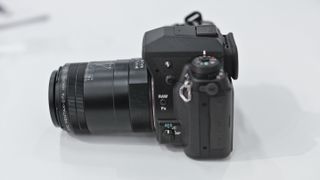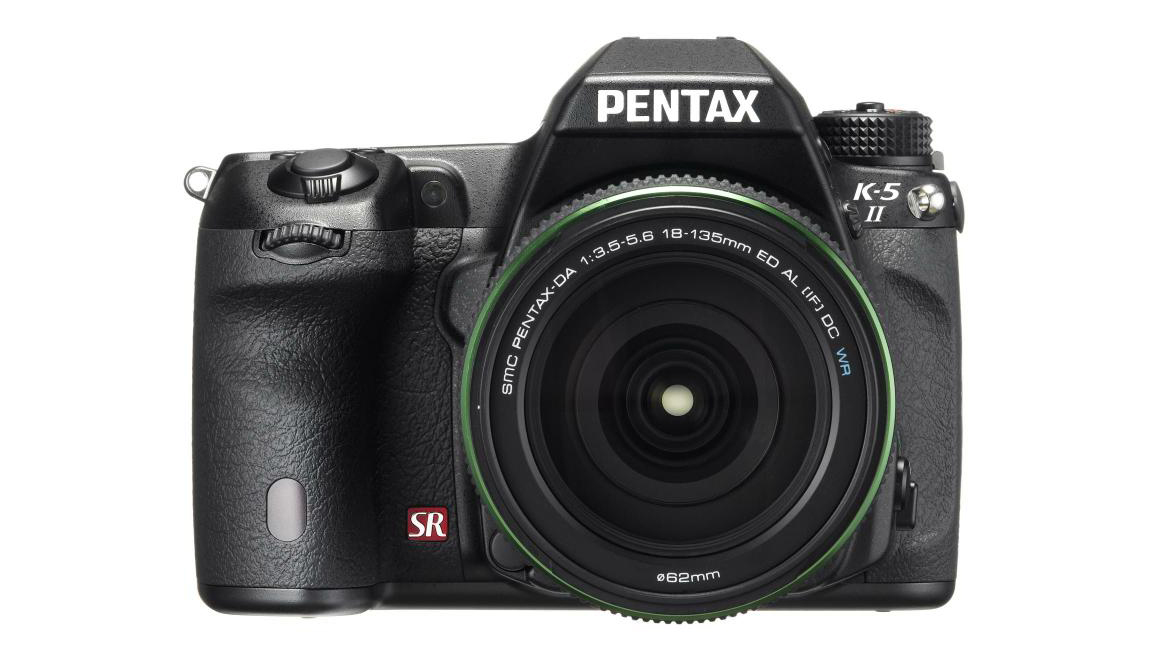TechRadar Verdict
Pros
- +
Solid build
- +
Ease of use
- +
Decent sensor
- +
In-camera Shake Reduction system
Cons
- -
Not that different from K-5
- -
Metering prone to overexpose
- -
Some fiddly controls
- -
Resolution scores unimpressive
Why you can trust TechRadar
Two years ago Pentax revamped its top-end APS-C DSLR, the Pentax K-7, with the Pentax K-5, and in doing so produced one of the best cameras in its class.
So given the original Pentax K-5 was such a well-rounded performer, it's perhaps of little surprise that Pentax didn't want to alter the K-5 recipe too much for its replacement.
Externally the Pentax K-5 II is virtually identical to its predecessor, and you'll still struggle to differentiate the two after a tech spec comparison.

Aside from a slightly improved LCD screen and an allegedly revamped sensor, the most notable development is the K-5 II's new SAFOX X autofocus system, which claims to offer a noticeable speed and accuracy boost over the original Pentax K-5.
One other difference that is obvious with the second generation Pentax K-5 is that it comes in two flavours; Pentax K-5 II and Pentax K-5 IIs. The latter is an identical camera, but forgoes an anti-aliasing filter in an attempt to improve image sharpness.
That's great in theory, but it adds a fair bit to the asking price, as well as a much greater risk of moiré interference when shooting densely patterned subjects.

The full price of the Pentax K-5 II is £799.99/AU$1,149/US$1,199.95 for the body only, since you ask. Its rivals from other brands include the Nikon D7000, Canon EOS 60D and Sony Alpha a65.
Whereas the original K-5 contained a considerably improved sensor over the old K-7, the new Pentax K-5 II doesn't move things on to the same degree. Pentax has stuck with a 16.3MP CMOS sensor, and while it does offer marginally improved low-light performance, you'll be hard pressed to notice any real world improvements in image quality.
Sensitivity also remains unchanged, ranging from ISO 100-12,800 and expandable to 80-51,200. You also get the option to pre-select the amount of in-camera noise reduction the K-5 II applies at each sensitivity setting, enabling you to perfectly balance detail retention and noise reduction.

One element that's completely new for the Pentax K-5 II is the SAFOX X autofocus system. Pentax claims this provides much improved speed and accuracy, as well as making the K-5 II the first APS-C camera to focus on lighting conditions as low as -3 EV.
As with the old Pentax K-5, you still get 11 well-spread autofocus points, nine of which are the more accurate cross-type.
Other in-camera image tweaks included automatic chromatic aberration compensation to minimise (but not eliminate) purple fringing in high-contrast areas, and distortion correction to remove wide-angle barrel distortion or telephoto pincushion effects. Although both features produce decent results, they do add a frustrating couple of seconds of processing time per shot.

Pentax's Dynamic range expansion feature is more usable though, and it does a great job of significantly brightening shadow areas while maintaining highlight detail for more balanced exposures.
If this isn't enough, then the camera also has an extensive multi-shot HDR capability, with four preset strengths plus an automatic mode. Results look the part, but are only available when shooting JPEG, and again, processing time is lengthy, this time being a whopping 20 seconds per shot.
Continuous shooting to a maximum speed of 7 fps keeps the Pentax K-5 II on a par with the competition, but it's no faster than the original Pentax K-5. Likewise, the Pentax K-5 II's Full HD movie recording ability is also unchanged, apart from the addition of some extra post-processing effects.

These effects can also be applied to still images, via a dedicated rear button. Options range from subtle contrast and saturation tweaks to enhance portraits or landscapes, through to more blatant effects such as Bleach Bypass, which desaturates the final image.
Each effect is fully customisable, and while such effects are of arguable usefulness in an enthusiasts' camera, they're a quick and easy way to add some basic image customisation.

The Fujifilm X100VI effect – how it's sparked a compact camera price boom and what I'd buy instead

9 of my favorite movies and shows that I streamed on Netflix, Prime Video and more in March 2025

ICYMI: the week's 7 biggest tech stories from Nintendo's last Switch direct to the Google Pixel 9a finally getting a release date











